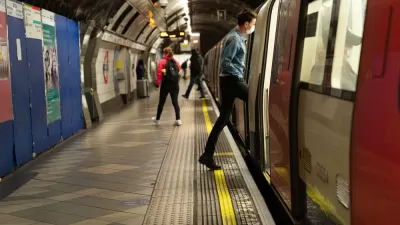Now that everyone understands what an exponential curve looks like, how it works, and how it brings life-threatening risk to their lives, it might be time to re-examine the realities of climate change, too.

Howard Kunreuther and Paul Slovic credit the coronavirus with teaching many more people in the world the concept of an exponential curve: “in which a quantity grows at an increasing rate over time, as the number of people contracting the virus currently is doing.”
Exponential growth is a hard concept for many people to grasp, according to Kunreuther and Slovic, until faced with the realities of a crisis. But the effects of climate change will work the same way, they argue.
And if there’s any silver lining in this mess, it’s that the coronavirus pandemic is teaching us a valuable lesson about the perils of ignoring destructive processes—and perhaps even larger, longer-term disasters—that increase exponentially. Even if growth looks mild in the moment—think of the earliest segments on an exponential curve like the red line shown in the illustration above—it will soon enough be severe. In other words, delay is the enemy.
The signs of exponential increase of carbon dioxide in the atmosphere are already there, according to the article. Like with coronavirus, delaying a worldwide response will have dire consequences in the future.
FULL STORY: What the Coronavirus Curve Teaches Us About Climate Change

Montreal Mall to Become 6,000 Housing Units
Place Versailles will be transformed into a mixed-use complex over the next 25 years.

Planetizen Federal Action Tracker
A weekly monitor of how Trump’s orders and actions are impacting planners and planning in America.

DARTSpace Platform Streamlines Dallas TOD Application Process
The Dallas transit agency hopes a shorter permitting timeline will boost transit-oriented development around rail stations.

Interactive Map Reveals America's “Shade Deserts”
Launched by UCLA and American Forests to combat heat-related deaths, the tool maps the shade infrastructure for over 360 U.S. cities.

Bicycles and Books — In Sacramento, Libraries Now Offer Both
Adult library card holders can check out e-bikes and e-trikes for up to one week.

Colorado Landfills Emit as Much Pollution as 1M Cars
Landfills are the third-largest source of methane pollution in Colorado, after agriculture and fossil fuel extraction.
Urban Design for Planners 1: Software Tools
This six-course series explores essential urban design concepts using open source software and equips planners with the tools they need to participate fully in the urban design process.
Planning for Universal Design
Learn the tools for implementing Universal Design in planning regulations.
City of Mt Shasta
City of Camden Redevelopment Agency
City of Astoria
Transportation Research & Education Center (TREC) at Portland State University
US High Speed Rail Association
City of Camden Redevelopment Agency
Municipality of Princeton (NJ)





























